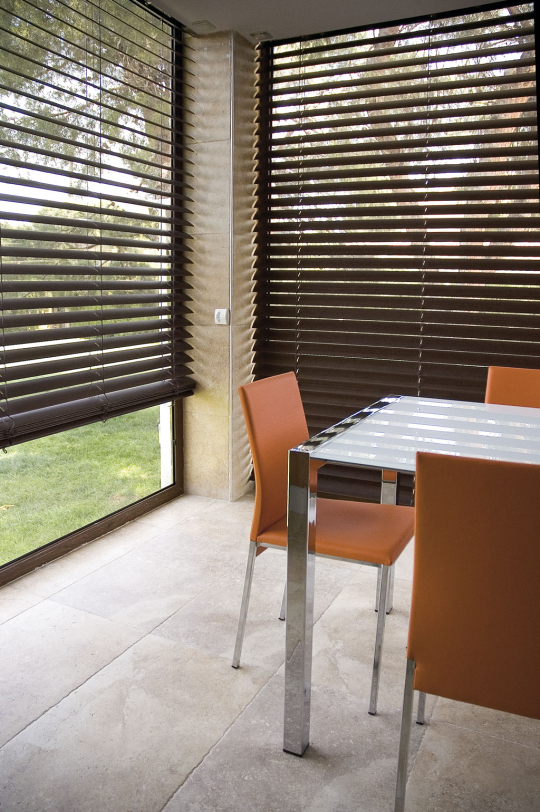
Return to Wood: Blinds Made from Exotic Willow
 |
Wooden blinds represent an unmistakable decorative element in the interior, which is their main added value compared to the more commonly used aluminum ones, which are rather inconspicuous components of the window. But what about their properties, such as lifespan or dimensional stability?
Special Wood from Africa
What applies to one type of wood may not apply to wood in general. Some woods are used as building materials, some are used to make furniture, and others decorative or utilitarian objects. Similarly, some types are more suitable for interiors, while others can withstand less favorable outdoor conditions. For the production of the slats of Bematech's blinds, exotic abachi wood, sourced from the African willow, is used. Since this tree grows throughout the year in stable natural conditions, its wood does not have growth rings and instead features an interesting grain pattern. Abachi wood is soft and therefore very pliable, lightweight, and has a smooth surface after processing. Additionally, it is knot-free and not prone to cracking. If well-dried, it does not tend to absorb moisture again, which means it does not deform as much as other woods.


Another advantage is its very low thermal conductivity, and for this reason, it is also used, for example, in the production of benches and backs for saunas. Thanks to this and other physical properties, wooden blinds can be a significant component of thermal protection in a room and positively influence the feeling of so-called thermal comfort. The inner surface of the wooden blind does not copy the outdoor temperature extremes transmitted through the window and maintains a temperature close to that of the interior. Thus, blinds in a closed state contribute to stabilizing the interior temperature and reducing energy consumption for heating or cooling in both summer and winter.
Different Types of Finishes
Some properties of wood can be enhanced—or conversely, undesirable ones suppressed—through appropriate finishing. Bematech offers three main collections of horizontal blinds made from abachi wood—Be One, Be Wood, and Be Noble—which primarily differ in their finishing. In addition, their portfolio also includes slats made from lime wood or bamboo. Be One includes lacquered slats (in any color from the RAL or NCS palette), Be Wood features stained slats, and Be Noble slats are first brushed to highlight their surface structure, and then stained in one of 125 shades. These product lines have been further expanded with subcategories Be Wood Light and Be Noble Light, which offer lighter shades of slats, and Be Wood Dark and Be Noble Dark, including darker shades. The blinds can thus be appropriately matched practically with any interior.Blinds can be made in a maximum size of 420 × 350 cm (width × height). The width of individual slats can be either 35, 50, or 70 millimeters, with a thickness of three millimeters. Blinds can be operated manually or motorized, but for larger blinds, the manufacturer recommends motorized operation.
The English translation is powered by AI tool. Switch to Czech to view the original text source.
0 comments
add comment
Related articles
0
25.11.2021 | From the Velvet Revolution to a Global Patent - the Story of BEMATECH
0
18.10.2021 | New brand 4INside.eu promises a safer environment for your family, clients, and employees
0
09.07.2021 | VERANDA SYSTEM: Professional shading of large and atypical roof areas
0
23.04.2020 | Large format blinds in an elegant design







